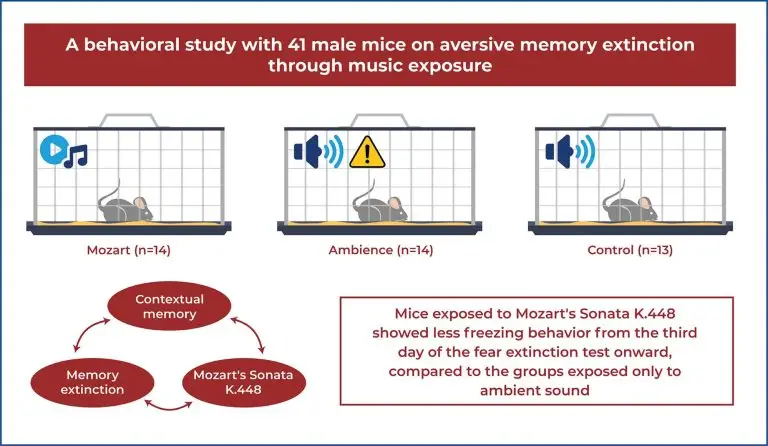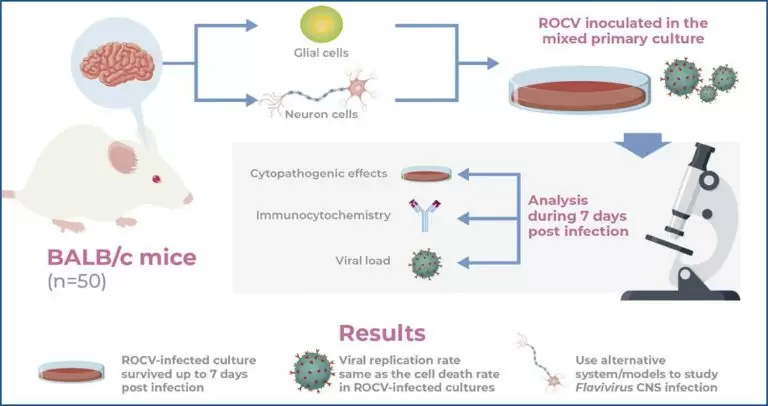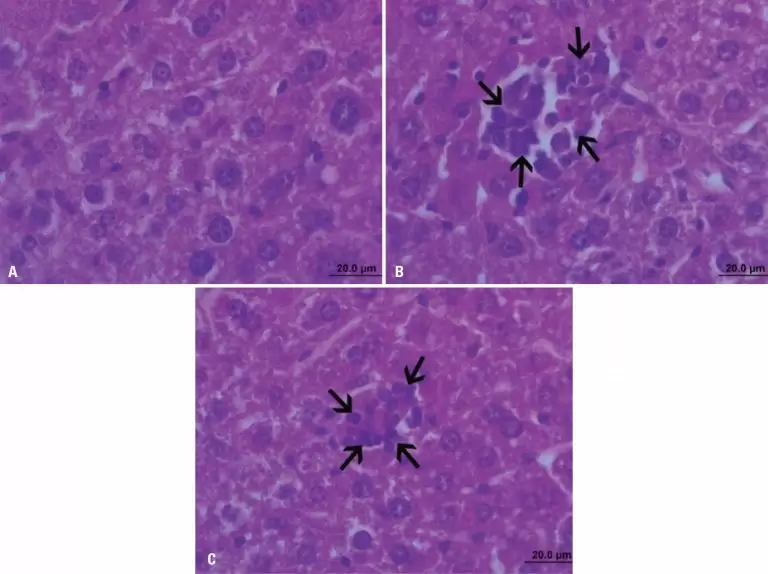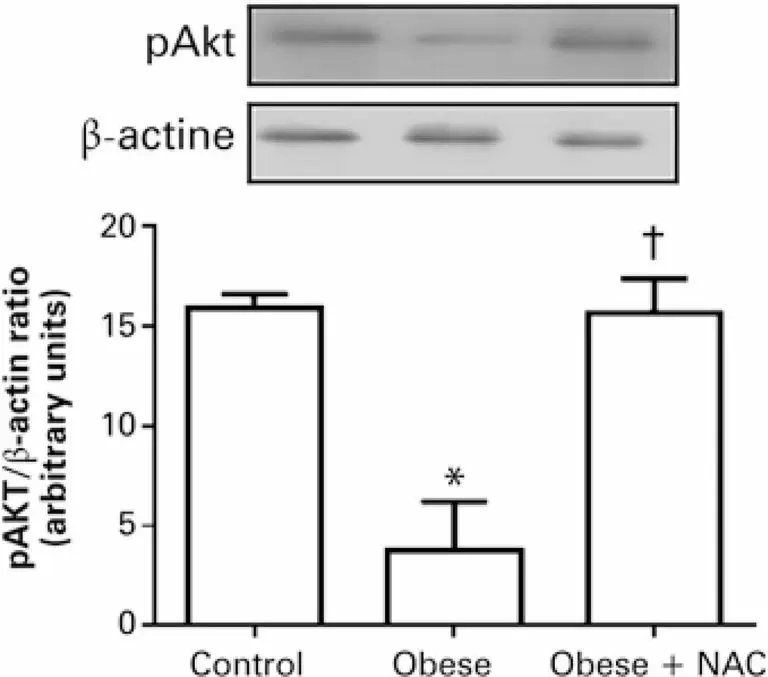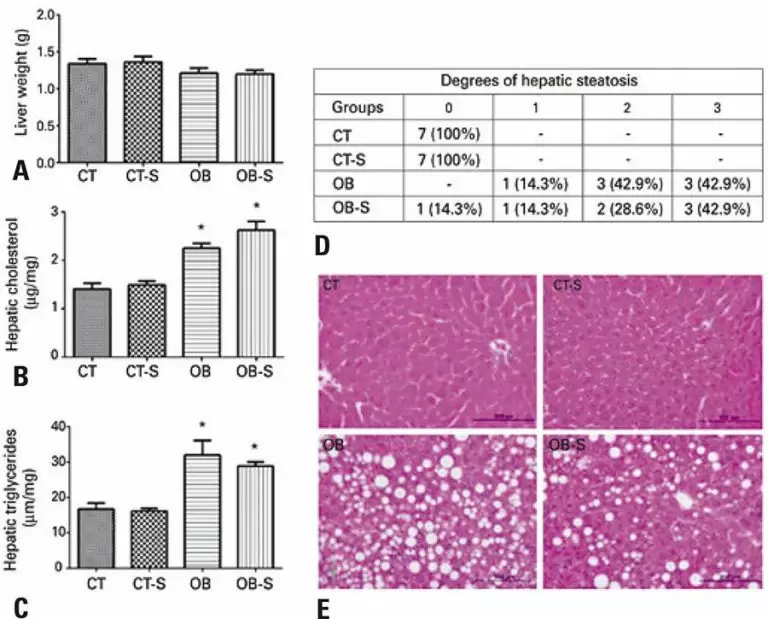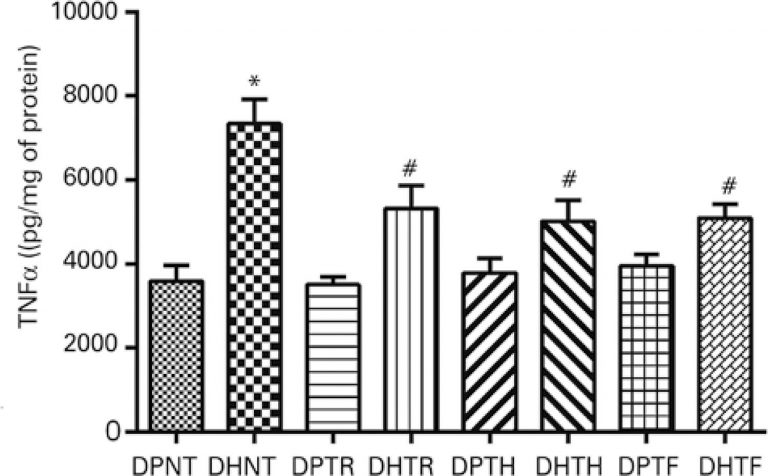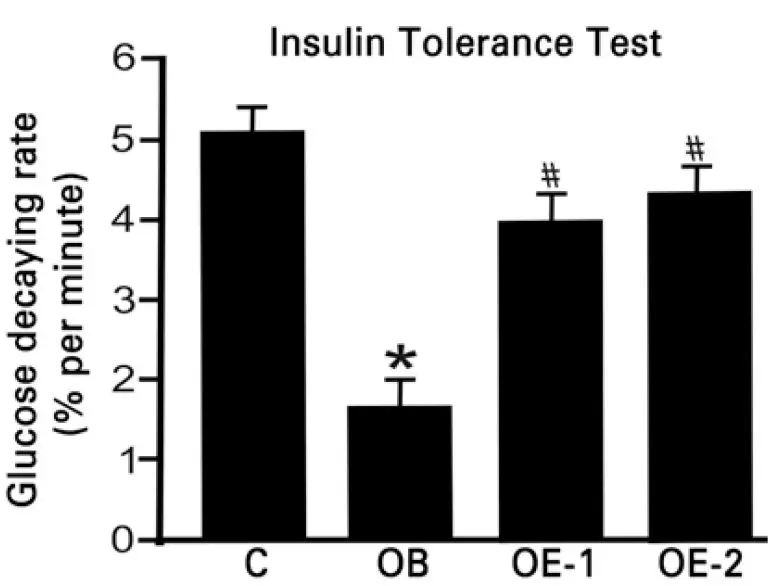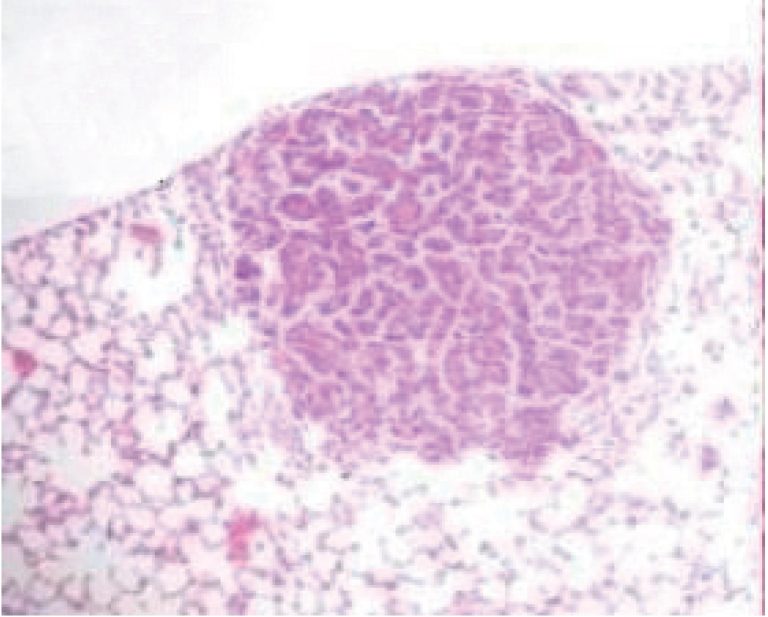02/Jul/2025
Investigation of the Mozart sonata effect on contextual memory extinction
DOI: 10.31744/einstein_journal/2025AO1299
Highlights ■ In this study, mice were exposed to music at the intrauterine stage. ■ Music exposure before aversive memory formation enhances neuroplasticity, aiding in extinction. ■ The recall test showed that music exposure had sustained beneficial long-term effects. ABSTRACT Objective: This study aimed to analyze the influence of Mozart’s Sonata K.448 on contextual memory extinction in male mice. Methods: Male mice were divided into three groups (G1-Mozart, G2-Ambience, G3-Control). Throughout the project, only the first group was exposed to […]
Keywords: Amnesia retrograde; Fear; Memory; Mice; Music
23/Nov/2023
Perinatal N(G)-Nitro-L-arginine methyl ester administration decreases anxiety- and depression-like behaviors in adult mice
einstein (São Paulo). 23/Nov/2023;21:eAO0302.
View Article23/Nov/2023
Perinatal N(G)-Nitro-L-arginine methyl ester administration decreases anxiety- and depression-like behaviors in adult mice
DOI: 10.31744/einstein_journal/2023AO0302
Highlights Perinatal L-NAME treatment decreased anxiety- and depression-like behaviors in adult mice. Perinatal L-NAME treatment did not promote changes in locomotor activity in adult mice. Perinatal L-NAME treatment did not alter pain perception ABSTRACT Objective: We hypothesized that perinatal manipulations of the nitrergic system would affect adult animal behaviors. Methods: We tested this hypothesis by perinatally administering N(G)-Nitro-L-arginine methyl ester (L-NAME), a non-specific antagonist of nitric oxide synthase for 15 days and assessed anxiety- and depression-like behaviors in adult mice. […]
Keywords: Anxiety; Depression; Mice; NG-nitroarginine methyl ester; Nitric oxide; Pain perception
23/May/2023
Replication of Rocio virus in primary cultures of mouse neural cells
DOI: 10.31744/einstein_journal/2023AO0160
Highlights A novel in vitro experimental model was described for Rocio Flavivirus replication in a primary mouse neural cell culture. ROCV efficiently infects primary neural cell cultures, causing cytopathic changes and cell death from the 2nd and 7th days post infection, respectively. A higher viral titer was observed on the 2nd days post infection. The viral replication kinetics was compatible with the cell death kinetics of ROCV-infected cultures. ABSTRACT Objective This study verified the replication efficiency of the Rocio virus […]
Keywords: Antigens, viral; Central nervous system infections; Disease models, animal; Flavivirus; Flavivirus infection; Mice; Primary cell culture; Rocio virus
01/Jun/2022
Exposure to glyphosate-based herbicide during early stages of development increases insulin sensitivity and causes liver inflammation in adult mice offspring
einstein (São Paulo). 01/Jun/2022;20:eAO6778.
View Article01/Jun/2022
Exposure to glyphosate-based herbicide during early stages of development increases insulin sensitivity and causes liver inflammation in adult mice offspring
DOI: 10.31744/einstein_journal/2022AO6778
ABSTRACT Objective: To investigate the effect of pre and postnatal exposure to a glyphosate-based herbicide on glucose metabolism and liver histology in adult F1 mice offspring. Methods: Female mice (C57Bl/6) received 0.5% of glyphosate (Roundup Original DI®) in drinking water or purified water (Glyphosate Group and Control Group respectively) during pregnancy and lactation. Offspring (F1) were submitted to glucose and insulin tolerance tests and euthanized on postnatal day 150. Body and plasma parameters, and liver histology were analyzed. Results: Exposure […]
Keywords: Endocrine disruptors; Glucose metabolism disorders; Glyphosate; Herbicides; Inbred C57BL; Inflammation; Mice
13/Mar/2020
Reduction of oxidative stress improves insulin signaling in cardiac tissue of obese mice
DOI: 10.31744/einstein_journal/2020AO5022
ABSTRACT Objective To evaluate the effects of oxidative stress on insulin signaling in cardiac tissue of obese mice. Methods Thirty Swiss mice were equally divided (n=10) into three groups: Control Group, Obese Group, and Obese Group Treated with N-acetylcysteine. After obesity and insulin resistance were established, the obese mice were treated with N-acetylcysteine at a dose of 50mg/kg daily for 15 days via oral gavage. Results Higher blood glucose levels and nitrite and carbonyl contents, and lower protein levels of […]
Keywords: Insulin resistance; Mice; Myocardium; Obesity; Oxidative stress
24/Sep/2019
Sericin as treatment of obesity: morphophysiological effects in obese mice fed with high-fat diet
DOI: 10.31744/einstein_journal/2020AO4876
ABSTRACT Objective To investigate the effects of sericin extracted from silkworm Bombyx mori cocoon on morphophysiological parameters in mice with obesity induced by high-fat diet. Methods Male C57Bl6 mice aged 9 weeks were allocated to one of two groups – Control and Obese, and fed a standard or high-fat diet for 10 weeks, respectively. Mice were then further subdivided into four groups with seven mice each, as follows: Control, Control-Sericin, Obese, and Obese-Sericin. The standard or high fat diet was […]
Keywords: Bombyx mori; Diet, high-fat; Intestine, small; Jejunum; Liver; Mice; Obesity/drug therapy; Sericins/therapeutic use
17/Sep/2019
Muscular resistance, hypertrophy and strength training equally reduce adiposity, inflammation and insulin resistance in mice with diet-induced obesity
einstein (São Paulo). 17/Sep/2019;18:eAO4784.
View Article17/Sep/2019
Muscular resistance, hypertrophy and strength training equally reduce adiposity, inflammation and insulin resistance in mice with diet-induced obesity
DOI: 10.31744/einstein_journal/2020AO4784
ABSTRACT Objective To evaluate the effect of three types of muscular resistance training on adiposity, inflammation levels and insulin activity in Swiss mice with fat-rich diet-induced obesity. Methods Lean and obese male Swiss mice were selected and allocated to one of eight groups comprising eight mice each, as follows: standard diet + no training; standard diet + muscular resistance training; standard diet + hypertrophy training; standard diet + strength training; high-fat diet + no training; high-fat diet + muscular resistance […]
Keywords: Exercise; Inflammation; Insulin resistance; Insulin/metabolism; Mice; Obesity; Resistance training; Weight loss
01/Jan/2014
Effects of different intensities of physical exercise on insulin sensitivity and protein kinase B/Akt activity in skeletal muscle of obese mice
einstein (São Paulo). 01/Jan/2014;12(1):82-9.
View Article01/Jan/2014
Effects of different intensities of physical exercise on insulin sensitivity and protein kinase B/Akt activity in skeletal muscle of obese mice
DOI: 10.1590/S1679-45082014AO2881
Objective : To investigate the effects of different intensities of acute exercise on insulin sensitivity and protein kinase B/Akt activity in skeletal muscle of obese mice. Methods : Swiss mice were randomly divided into four groups, and fed either a standard diet (control group) or high fat diet (obese sedentary group and obese exercise group 1 and 2) for 12 weeks. Two different exercise protocols were used: swimming for 1 hour with or without an overload of 5% body weight. […]
Keywords: Diabetes; Insulin resistance; Mice; Obesity; Physical exercise
01/Jul/2011
Analysis of the action of Himatanthus drasticus in progression of urethane-induced lung cancer in mice
DOI: 10.1590/S1679-45082011AO2013
ABSTRACT Objective: To evaluate the effect of janaguba in inhibiting the development of lung cancer in an experimental urethane-induced model. Methods: a total of 3mg/kg urethane was injected in 51 Balb-C mice aged 7-13 weeks of life. Janaguba was administered orally daily in two doses: 0.04 mL (Group 2, G2) and 0.06 mL (Group 3, G3), for 20 weeks. After this period, the mice were sacrificed and the number of lesions counted. Results: The mean weight of Group 2 was […]
Keywords: Lung neoplasms; Mice; Phytotherapy, experimental; Urethane


